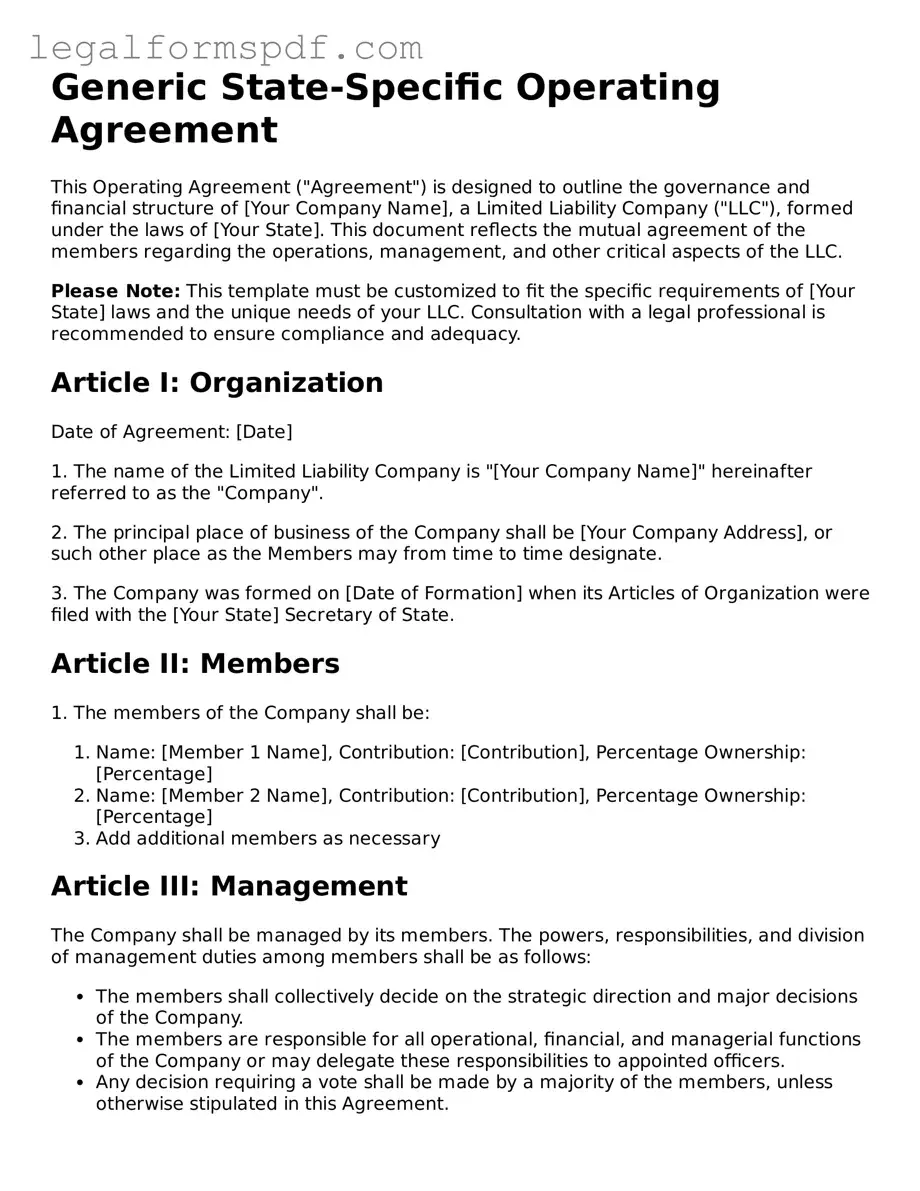Generic State-Specific Operating Agreement
This Operating Agreement ("Agreement") is designed to outline the governance and financial structure of [Your Company Name], a Limited Liability Company ("LLC"), formed under the laws of [Your State]. This document reflects the mutual agreement of the members regarding the operations, management, and other critical aspects of the LLC.
Please Note: This template must be customized to fit the specific requirements of [Your State] laws and the unique needs of your LLC. Consultation with a legal professional is recommended to ensure compliance and adequacy.
Article I: Organization
Date of Agreement: [Date]
1. The name of the Limited Liability Company is "[Your Company Name]" hereinafter referred to as the "Company".
2. The principal place of business of the Company shall be [Your Company Address], or such other place as the Members may from time to time designate.
3. The Company was formed on [Date of Formation] when its Articles of Organization were filed with the [Your State] Secretary of State.
Article II: Members
1. The members of the Company shall be:
- Name: [Member 1 Name], Contribution: [Contribution], Percentage Ownership: [Percentage]
- Name: [Member 2 Name], Contribution: [Contribution], Percentage Ownership: [Percentage]
- Add additional members as necessary
Article III: Management
The Company shall be managed by its members. The powers, responsibilities, and division of management duties among members shall be as follows:
- The members shall collectively decide on the strategic direction and major decisions of the Company.
- The members are responsible for all operational, financial, and managerial functions of the Company or may delegate these responsibilities to appointed officers.
- Any decision requiring a vote shall be made by a majority of the members, unless otherwise stipulated in this Agreement.
Article IV: Capital Contributions
Members have contributed capital to the Company as documented above in Article II. The procedure for making additional contributions shall be determined by a majority vote of the members.
Article V: Distributions
Distributions of profit and losses shall be made proportionally to the members' percentage ownership in the Company annually or at other intervals as decided by the members.
Article VI: Changes to the Agreement
Any changes to this Agreement must be made in writing and signed by all members of the Company.
Article VII: Dissolution
The Company may be dissolved upon the agreement of a majority of the members. Upon dissolution, the assets of the Company shall be distributed according to the members' percentage ownership after all debts and liabilities have been settled.
Article VIII: Governing Law
This Agreement and the operation of the Company are subject to the laws of [Your State].
IN WITNESS WHEREOF, the Members have executed this Operating Agreement as of the latest date written below.
Member Signatures:
- [Member 1 Name], Date: [Date]
- [Member 2 Name], Date: [Date]
- Add additional member signatures as necessary
